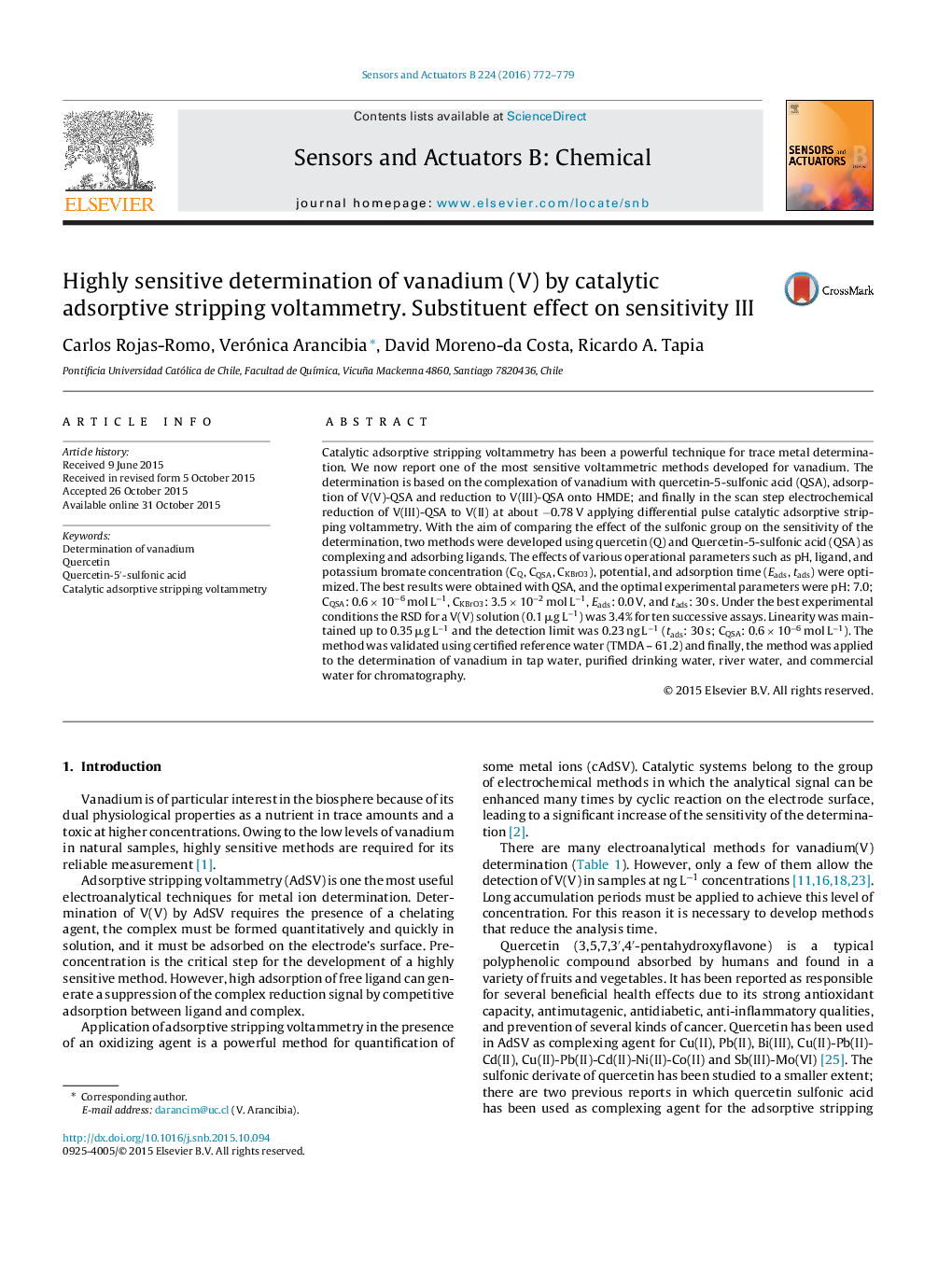| کد مقاله | کد نشریه | سال انتشار | مقاله انگلیسی | نسخه تمام متن |
|---|---|---|---|---|
| 750548 | 1462067 | 2016 | 8 صفحه PDF | دانلود رایگان |

• The effect of the sulfonic group on the sensitivity of the V(V) determination was compared using quercetin (Q) and quercetin-5-sulfonic acid (QSA).
• A sensitive, rapid, and selective method for V(V) determination using QSA was developed.
• The adsorbed V(V)-QSA complex produce a strong peak at about −0.79 V which corresponds to reduction of V(III)-QSA complex.
• The DL of the method was 0.23 ng L−1 (tads: 30 s).
• The method was validated and interference study was carried out.
Catalytic adsorptive stripping voltammetry has been a powerful technique for trace metal determination. We now report one of the most sensitive voltammetric methods developed for vanadium. The determination is based on the complexation of vanadium with quercetin-5-sulfonic acid (QSA), adsorption of V(V)-QSA and reduction to V(III)-QSA onto HMDE; and finally in the scan step electrochemical reduction of V(III)-QSA to V(II) at about −0.78 V applying differential pulse catalytic adsorptive stripping voltammetry. With the aim of comparing the effect of the sulfonic group on the sensitivity of the determination, two methods were developed using quercetin (Q) and Quercetin-5-sulfonic acid (QSA) as complexing and adsorbing ligands. The effects of various operational parameters such as pH, ligand, and potassium bromate concentration (CQ, CQSA, CKBrO3), potential, and adsorption time (Eads, tads) were optimized. The best results were obtained with QSA, and the optimal experimental parameters were pH: 7.0; CQSA: 0.6 × 10−6 mol L−1, CKBrO3: 3.5 × 10−2 mol L−1, Eads: 0.0 V, and tads: 30 s. Under the best experimental conditions the RSD for a V(V) solution (0.1 μg L−1) was 3.4% for ten successive assays. Linearity was maintained up to 0.35 μg L−1 and the detection limit was 0.23 ng L−1 (tads: 30 s; CQSA: 0.6 × 10−6 mol L−1). The method was validated using certified reference water (TMDA – 61.2) and finally, the method was applied to the determination of vanadium in tap water, purified drinking water, river water, and commercial water for chromatography.
Journal: Sensors and Actuators B: Chemical - Volume 224, 1 March 2016, Pages 772–779